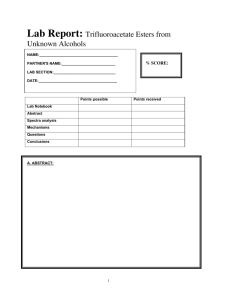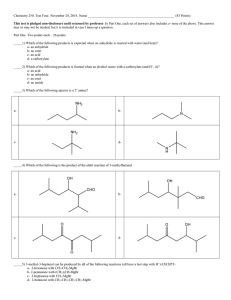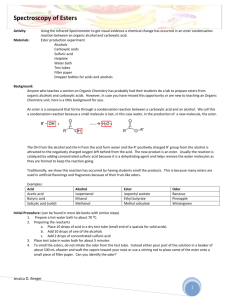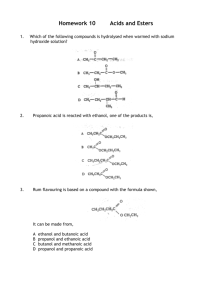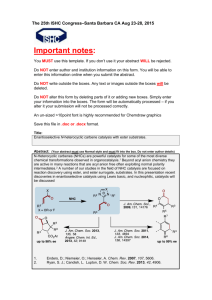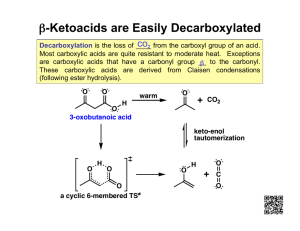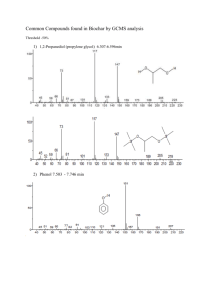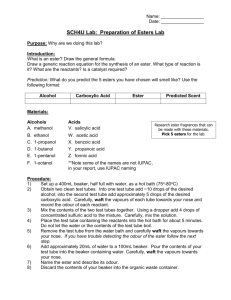Lab Report: Trifluoroacetate Esters from
advertisement
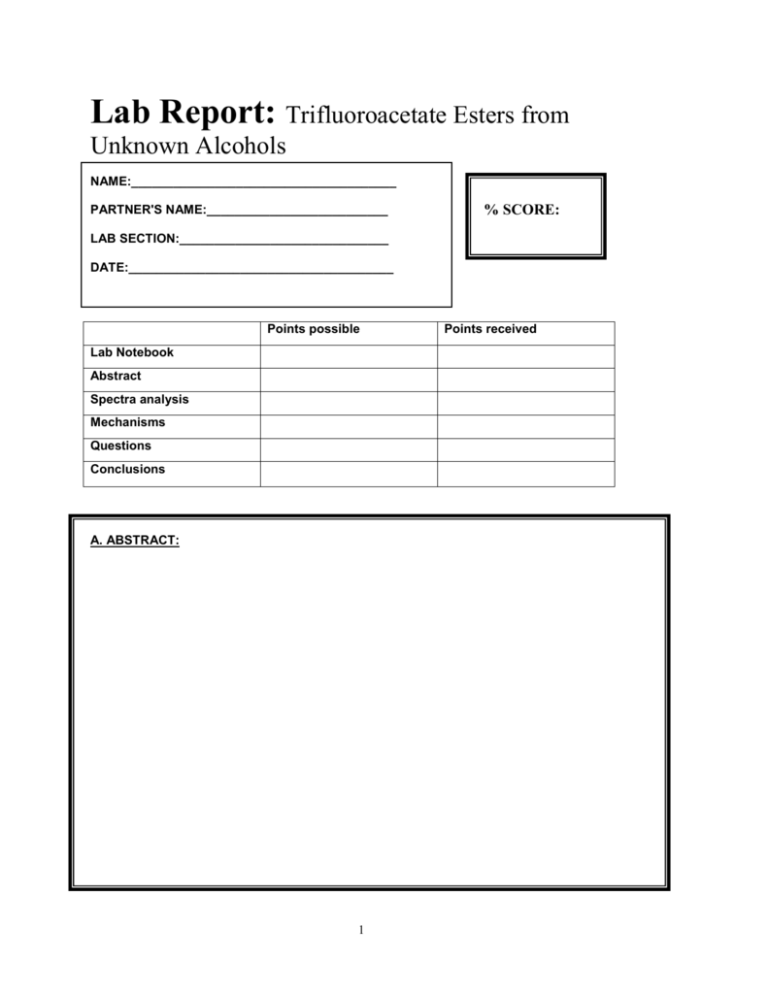
Lab Report: Trifluoroacetate Esters from Unknown Alcohols NAME:______________________________________ PARTNER'S NAME:__________________________ % SCORE: LAB SECTION:______________________________ DATE:______________________________________ Points possible Lab Notebook Abstract Spectra analysis Mechanisms Questions Conclusions A. ABSTRACT: 1 Points received B. SPECTROSCOPIC ANALYSIS 1. RECORD THE LETTER OF YOUR ASSIGNED UNKNOWN ALCOHOL _____________ 2. IR SPECTRUM Does an IR spectrum of your product confirm that your alcohol reacted to form an ester? Explain below citing specific peaks that confirm ester formation. Attach a labeled spectrum to either your report or your partners. 3. 13CNMR SPECTROSCOPY How many peaks are reported for the CNMR of your unknown ester?__________ List ALL possible alcohols from Table 1 that can produce this number of peaks in CNMR: ________________________________________________________________________________ 4. 1HNMR SPECTROSCOPY Attach 1H NMR spectrum of your ester. First draw and label the structure of your ester on your HNMR and in the space provided below. Identify the labeled protons on your HNMR and attach the labeled spectrum to this report. To label your ester correctly, label the protons on the carbon nearest the carbonyl as Ha continue to label protons with letters of the alphabet as they are removed from the carbonyl- an example using the ester of 1-butanol is shown below. F3C H2 C O C H2 O a b CH3 C H2 d c An example of how to label your ester Drawing of your trifluoroester labeled for HNMR C. MECHANISM 1. Today’s experiment involved the reaction of an alcohol with trifluoroacetic anhydride. This reaction can be classified as a nucleophilic substitution. Show the first step of the mechanism of your unknown alcohol and trifluoroacetic anhydride forming a tetrahedral intermediate. Use arrows and structures. 2. Instead of using trifluoroacetic anhydride, the non-fluorinated acetic anhydride could have been used. Would the reaction proceed faster or slower with acetic anhydride? Explain 2 D. QUESTIONS 1. Your reaction flask needed to be dry in order for the reaction to be successful. If you used a wet reaction flask, show the reaction that would occur with water and one reagent. 2. Why does salt often precipitate out of saturated salt solution when working up the reaction? Phosgene is the acid chloride of carbonic acid. Although phosgene was used as a war gas in World War I, it is now used as a reagent for the synthesis of many useful products. Phosgene reacts like other acid chlorides, but it can react twice. Predict the products formed when phosgene reacts with O O HO OH carbonic acid O 2 Nuc: Cl Cl Nuc Nuc phosgene 3. Excess methanol 4. 1 equivalent of ethanol, followed by 1 equivalent of methylamine 5. 1,3-propandiol 6. Predict the product of saponification of the following ester. Show the products as they exist in basic solution. O O O O NaOH (aq) Heat 3 E. CONCLUSIONS In a short paragraph, provide a justification for your identification of the unknown alcohol. In other words, report how each piece of information (boiling point, refractive index, CNMR, HNMR including splitting) directed your decision? Which alcohols did each piece of information allow you to exclude? 4
